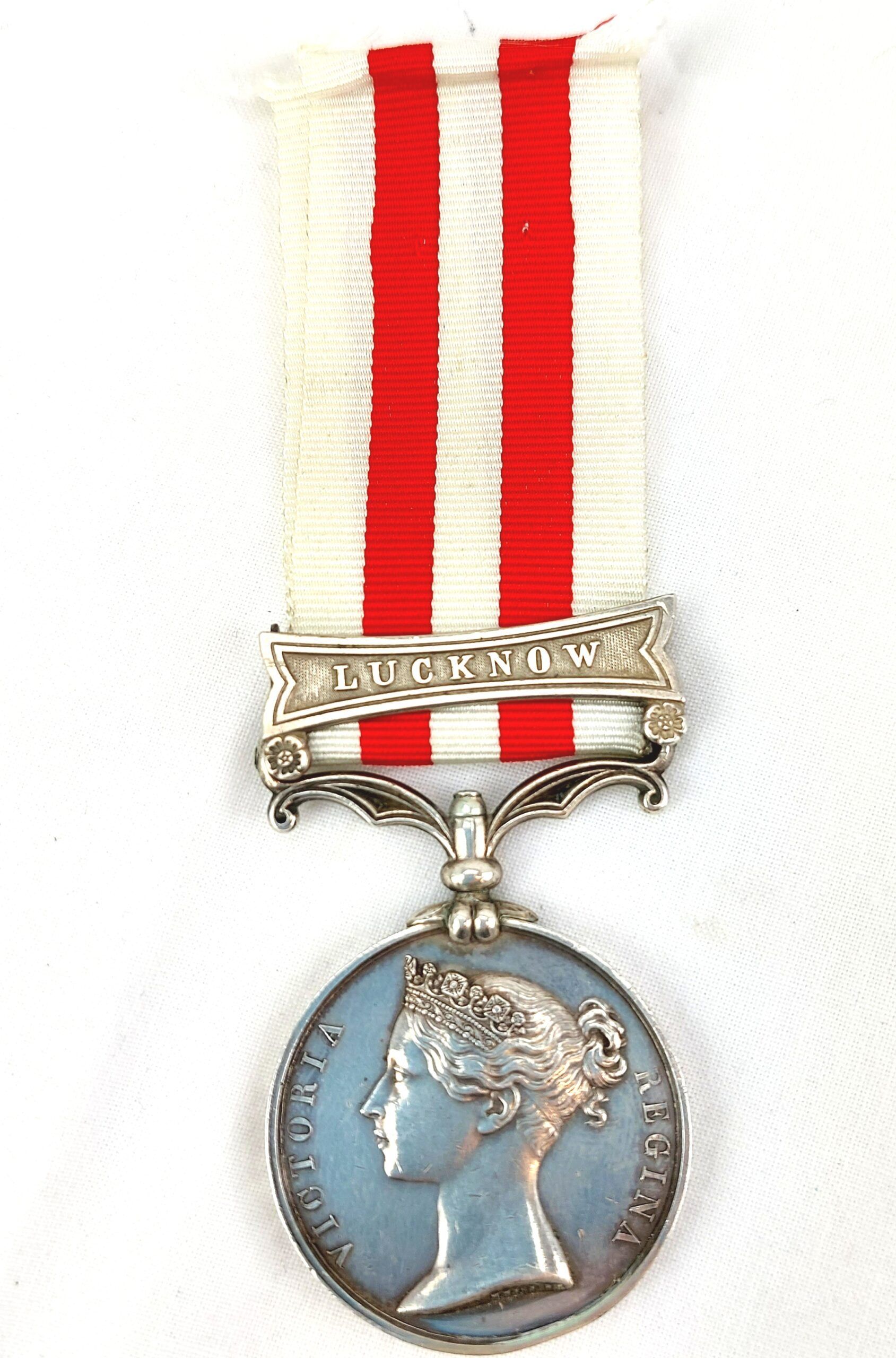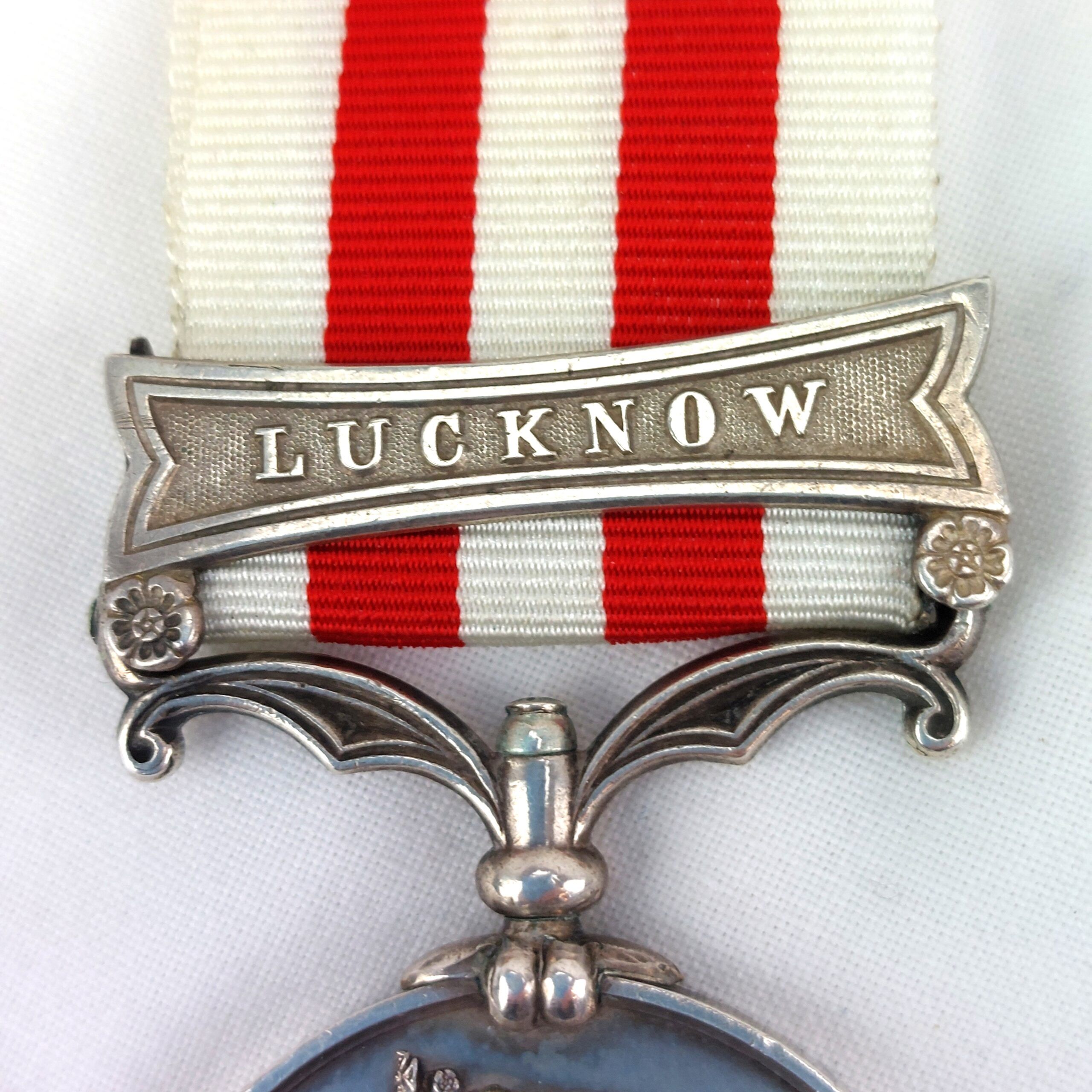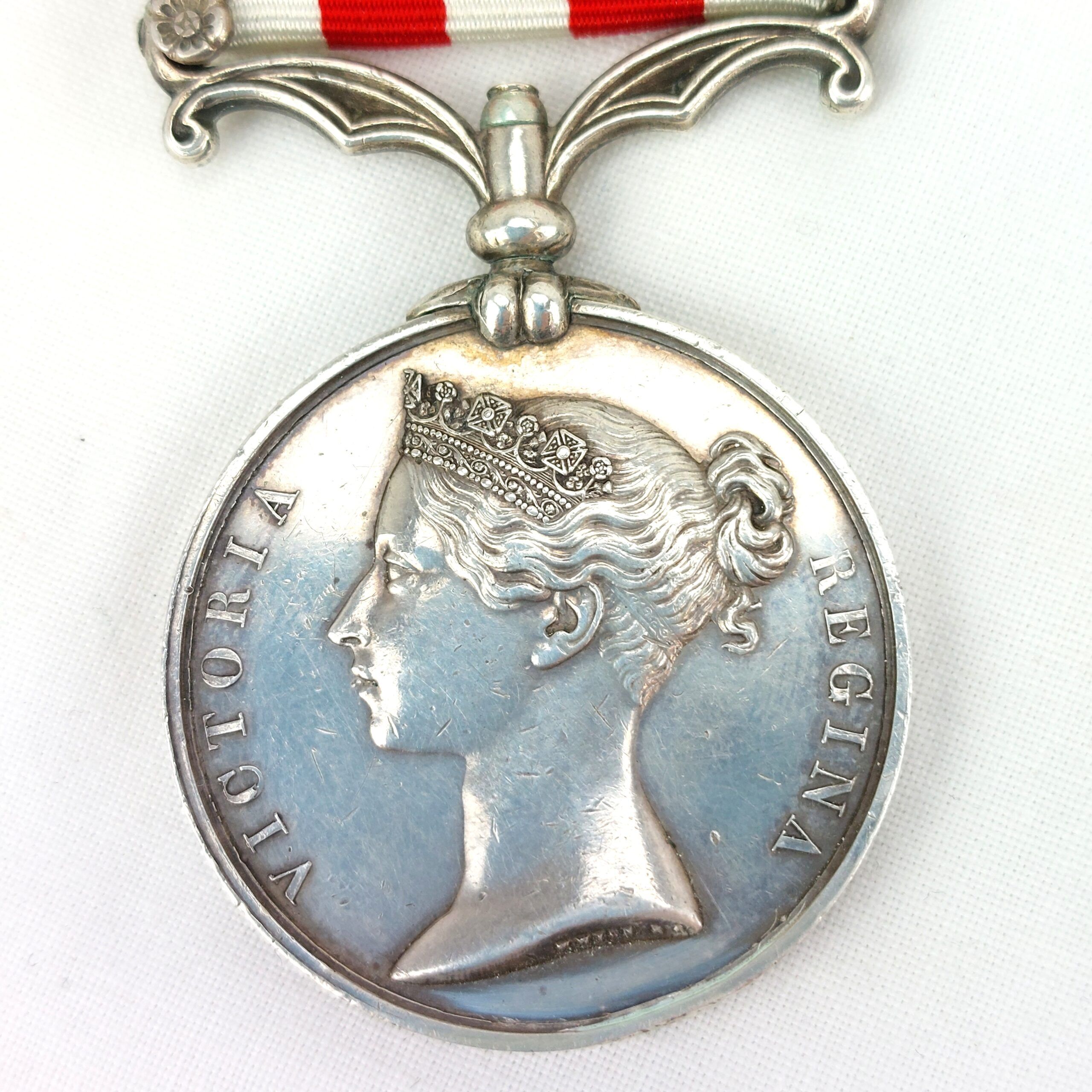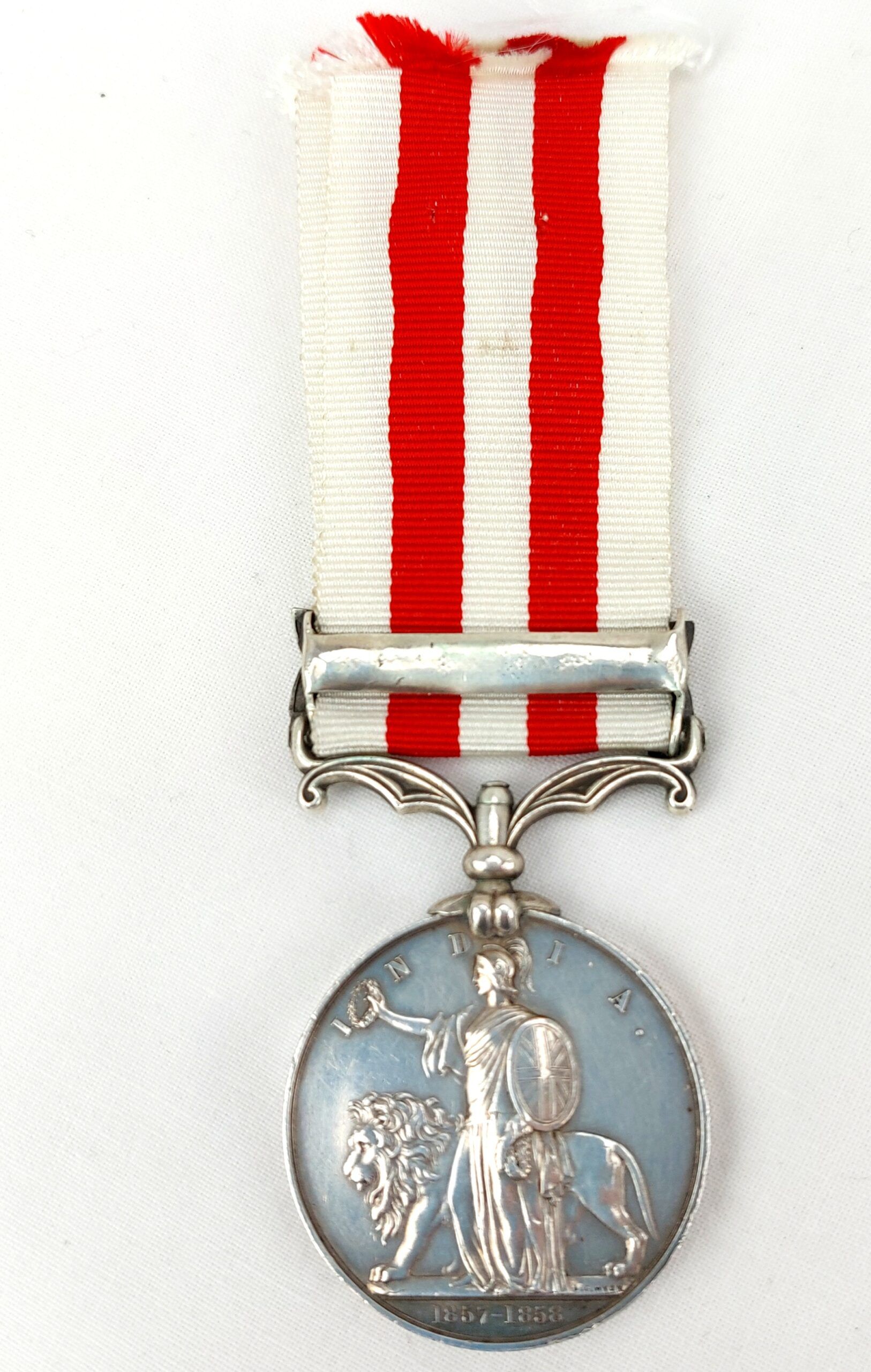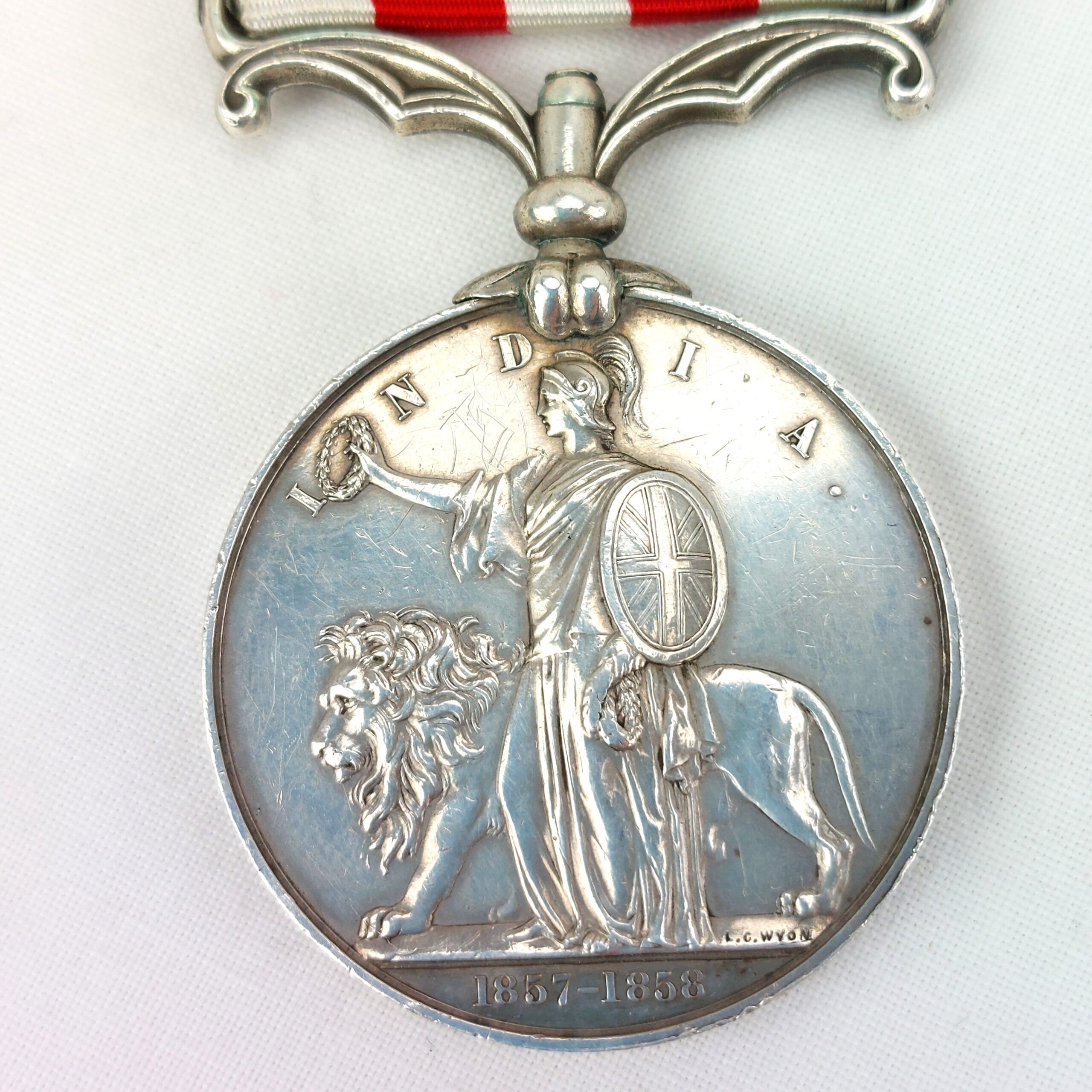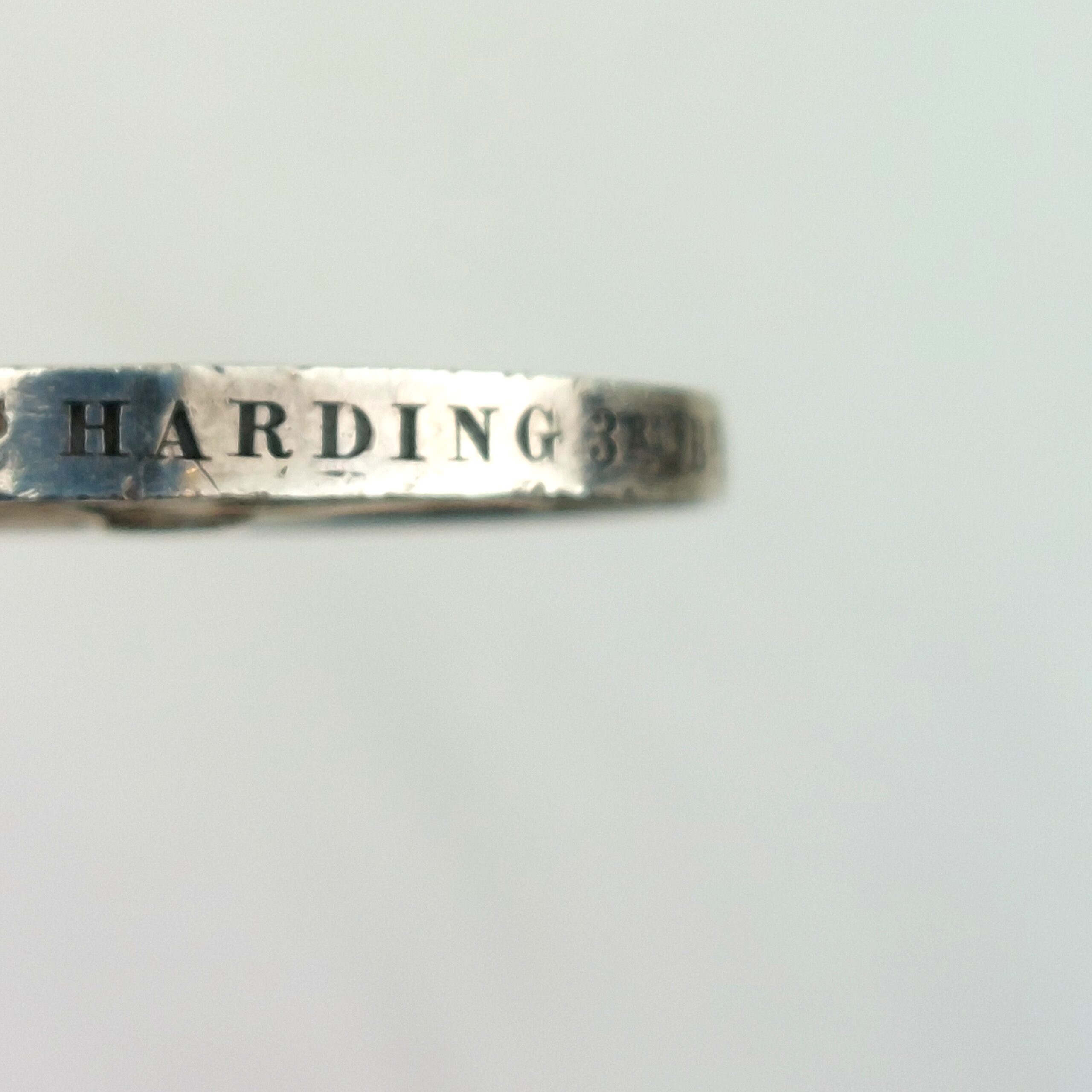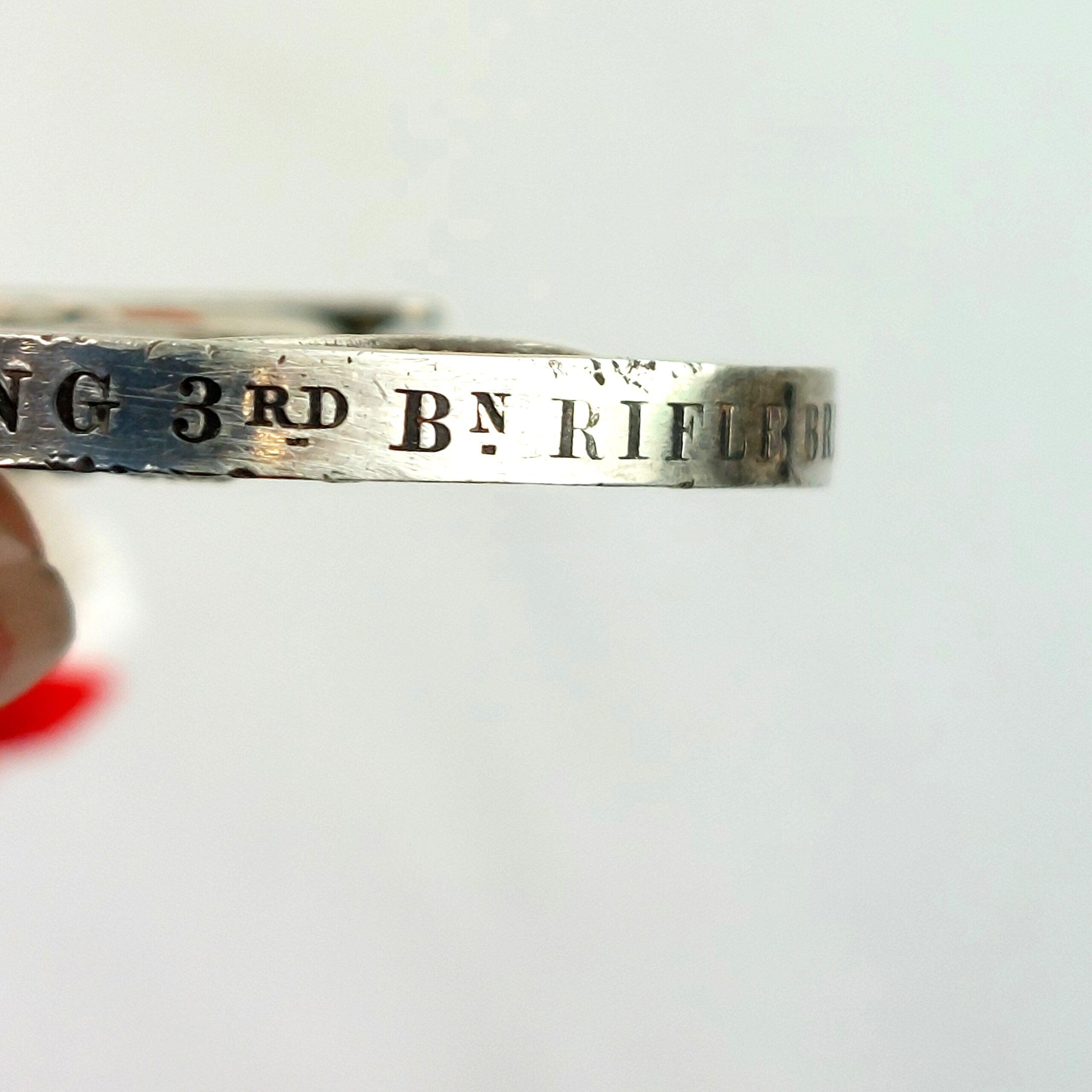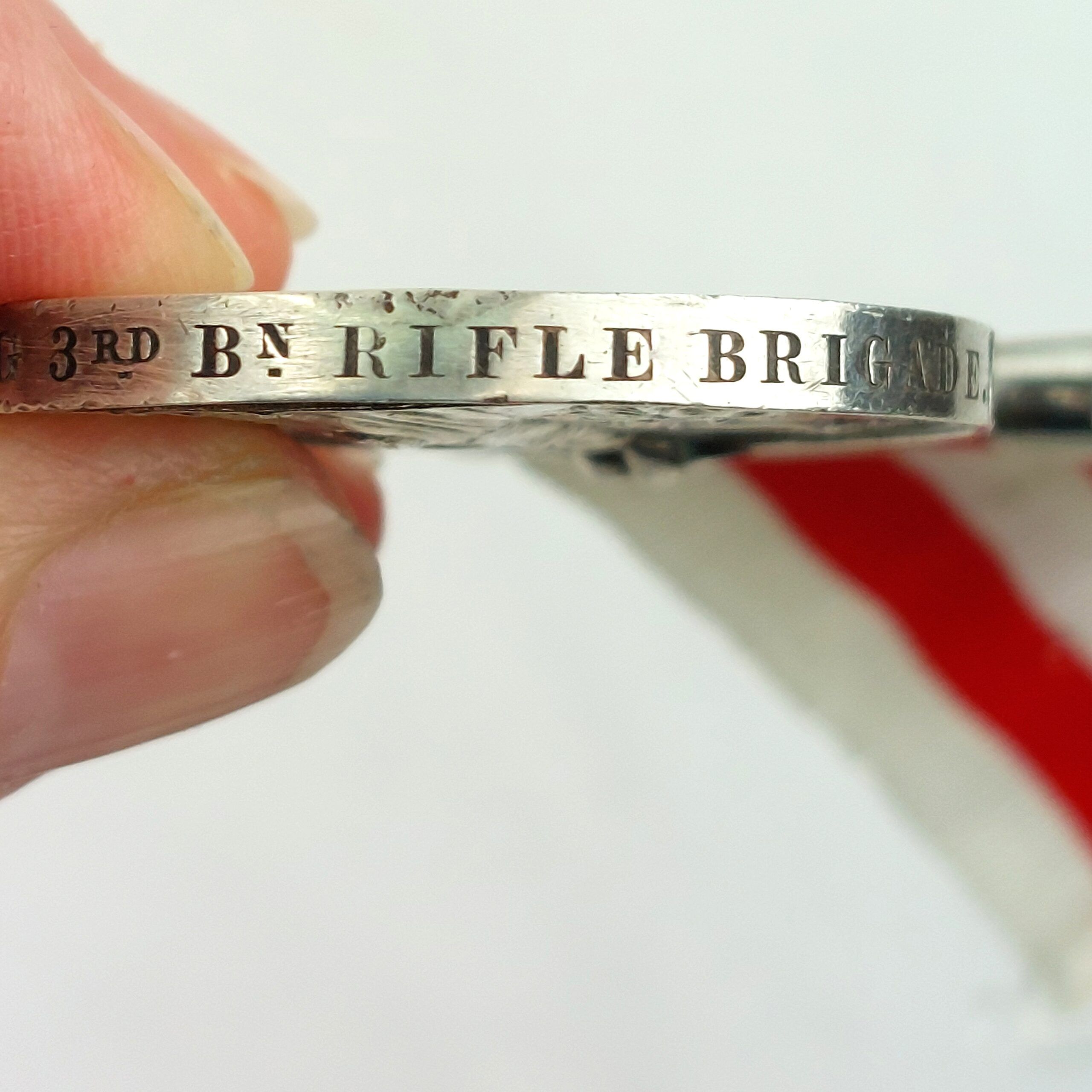*British Army India Mutiny Medal 1857-1858, with Lucknow Clasp, Thomas Harding 3rd Battalion Rifle Brigade (Camel Corps – ‘corps d’elite’), Silver*
Overse: Wyon profile portrait of Queen Victoria
Reverse: Britannia standing with Lion Passant
The Indian Mutiny Medal (1857-1858) was issued by the United Kingdom to British and Indian soldiers who served during the Indian Mutiny, starting on May 10, 1857. This silver, circular medal features Queen Victoria’s diademed portrait with “Victoria Regina” on the obverse, and Britannia with a lion, a wreath, and a shield on the reverse. The reverse also displays “India” above and “1857-1858” below. It hangs from a red and white striped ribbon. The obverse was designed by William Wyon, and the reverse by his son, Leonard Charles Wyon, both of the Royal Mint.
The “Lucknow” clasp was awarded to those who served under Sir Colin Campbell in the operations to capture Lucknow and quell the surrounding unrest from November 1857 to March 1858.
3rd Battalion Rifle Brigade (Prince Consort’s Own)
Formed in 1800, this rifle regiment was known for its light infantry training, sharpshooting, and scouting. Prince Albert, Queen Victoria’s consort, was the colonel-in-chief from 1852 to 1861. During the Indian Mutiny, a detachment from the 3rd Battalion joined the 2nd Battalion to form the Camel Corps, established in Lucknow on April 5, 1858. The Camel Corps was a rapid-response unit praised by Sir Colin Campbell and used extensively in 1858 and 1859 to pursue rebels across Rohilkund and Oudh. The unit was disbanded on June 1, 1860.
The Indian Mutiny
The Indian Rebellion of 1857 was a major but unsuccessful uprising against the British East India Company’s rule, leading to direct British Crown control over India. It began in Meerut and spread through the upper Gangetic plain and central India. The mutiny is also known as India’s First War of Independence, the Great Rebellion, the Sepoy Mutiny, and the Revolt of 1857.
Seige of Lucknow
Begum Hazrat Mahal, aiming to reclaim Oudh for her son, organized a military force to besiege the Residency. On May 30, 1857, rebellion erupted in Lucknow as Indian soldiers attacked British officers and set fire to their bungalows, prompting civilians to seek refuge in the fortified British Residency; forcing the British to endure a nearly five-month-long siege.
*Condition*
Dink to obverse rim below neck of Victoria, light bruising around rim and light surface scratches. Otherwise excellent condition commensurate with age. Please see photographs as part of the condition report.
JAQDFOXIOO_8498165121


